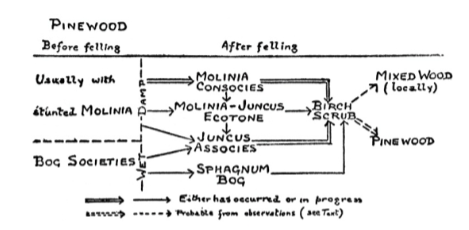Ecology Test 3
1/38
There's no tags or description
Looks like no tags are added yet.
Name | Mastery | Learn | Test | Matching | Spaced |
|---|
No study sessions yet.
39 Terms
Predator adaptations to be more efficient at capturing/eating prey
strong jaws to crush through bone
chew up and down instead of side-to-side
eyes on the front of their head, allowing depth and distance perception
Physical Adaptations to escape being eaten
large size
body armor
tough leaves
spines and thorns
hairs that can pierce skin
cryptic coloration
prey is camouflaged or resembles its background
ex.) polar bears in the snow

warning coloration (aposematic)
Animals that warn predators of their dangerous nature
predators learn not to eat organisms that have distinct coloration or toxins
ex.) the rattle of a rattlesnake
ex.) the bright colors of a poison dart frog
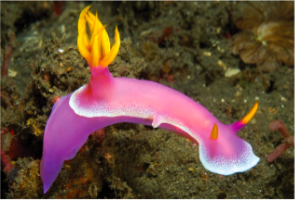
mimicry
the prey resembles another organism that is toxic or very fierce
ex.) Monarch and Viceroy
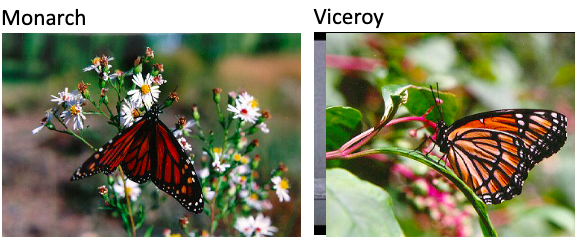
Predation
Individuals of one species (predators) feed on, and directly harm, individuals of another species (prey).
can be plants or animals
Carnivory
Prey
mobile (alive and running away)
killed
higher nutrient content (have to eat less)
Predator
broad diets
Herbivory
Prey
non-mobile (stationary plants)
varying levels of harm (eating the leaves or top of grass doesn’t kill the plant)
lower nutrient content (have to eat more)
Predators
narrow diets
ex.) pandas and bamboo
Know the meaning behind an “evolutionary arms race”.
a struggle between competing sets of co-evolving genes
physical and behavioral traits that develop escalating adaptations and counter-adaptations against each other
may occur between individuals of the same species or between species
affects both predator and prey
explains some of the unusual traits that have evolved
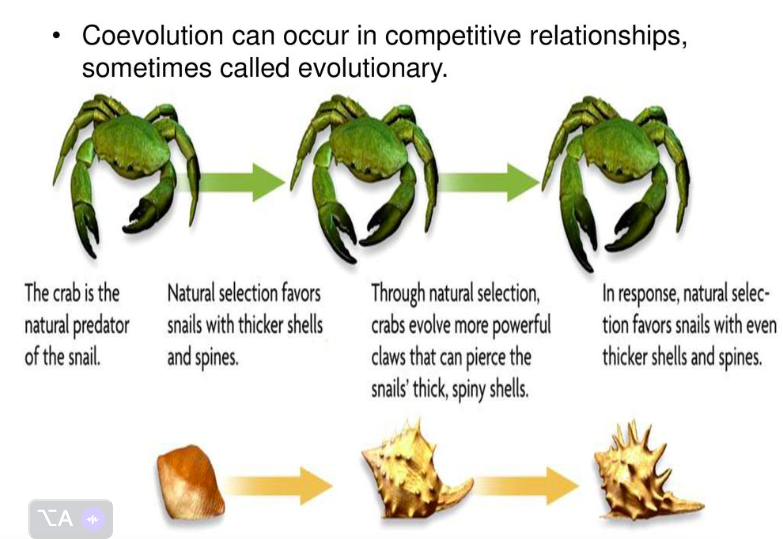
“evolutionary arms race” example
rattlesnake vs. ground squirrel
over time, the rattlesnake’s venom has become more potent but the ground squirrel, whose only enemy is the rattlesnake, has developed stronger and stronger immunity to its venom
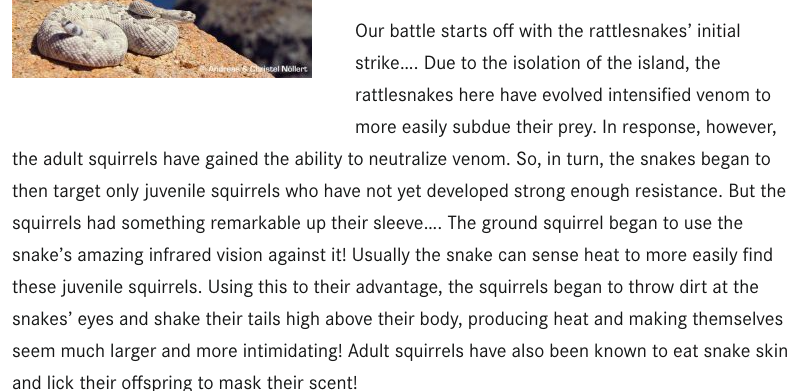
Lotka-Volterra model assumptions
only two species exist: fox and rabbit
rabbits are born and then die through predation or eventual death
foxes are born and their birth rate is positively affected by the rate of predation, and they die naturally.
Be able to draw a state-space graph and predict the short-term trend in prey and predator populations (given an initial starting point, provided by me).
x
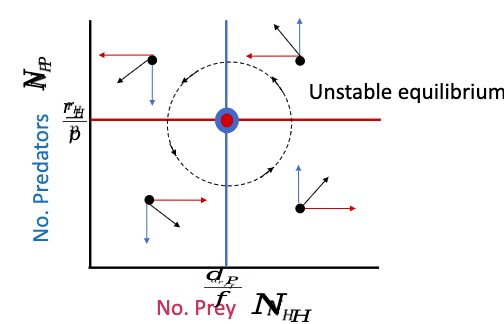
Know why it is hard to replicate oscillations we see in nature, in the lab.
it’s hard to replicate what happens in the wild in a lab because you can’t account for all the variables
Know the factors in the model that control the amplitude and period of predator/prey oscillations (you won’t need to calculate anything here).
amplitude
is determined by the initial population size.
period
is based on the prey growth rate and the predator death rate
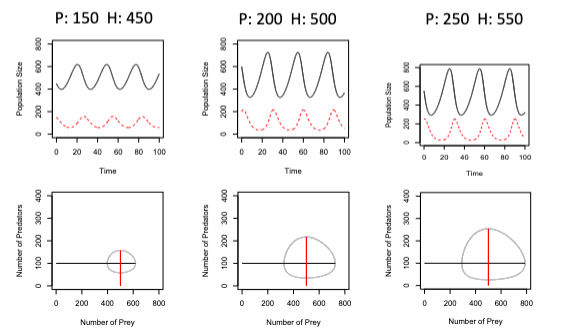
Understand the assumptions of the predator-prey Lotka-Volterra models.
growth of prey is only limited by predation
predator is a specialist
Predators can consume an infinite number of prey
Predator and prey encounter one another randomly in a homogenous environment

biodiversity
the variety of life on Earth, in all its forms
ex.) from genes and bacteria to entire ecosystems like forests or coral reefs
The degree of diversity found within a specific ecological system
species diversity
made up of species evenness and species richness
Diversity is greatest when all the species present are equally abundant in the area
affecting factors
latitude (terrestrial)
area and isolation of habitats
environmental complexity
disturbance
human stressors
biodiversity vs species diversity
Biodiversity includes species diversity, genetic diversity, and ecosystem diversity
Species Evenness
the number of species individuals in an environment
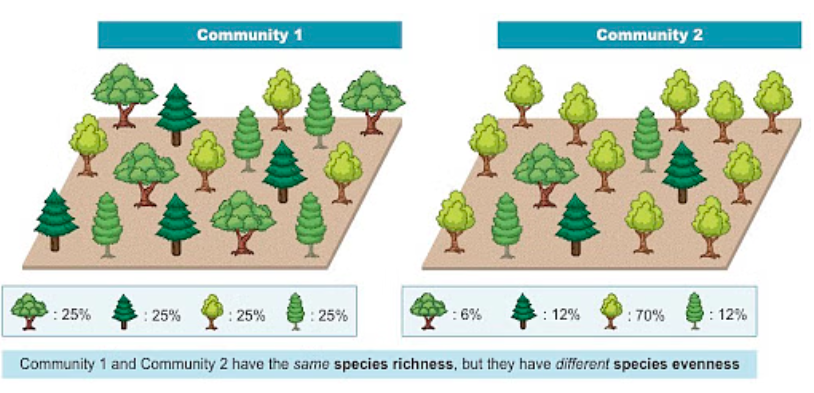
Species Richness
the number of different species in a given area.
considerations
Number of samples taken
Time devoted to sampling
Representation of habitats

Know how to calculate the Shannon Diversity Index
x
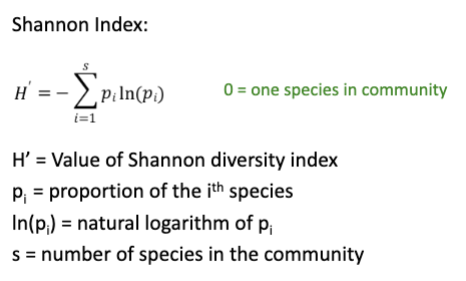
Species Accumulation Curve
a graph that counts species, not individuals of a species
counts species richness
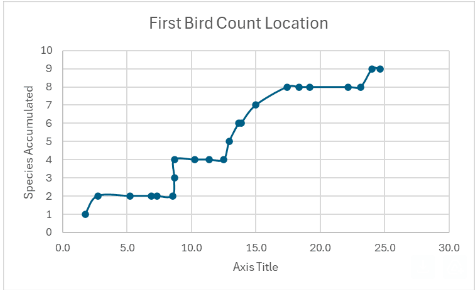
Species Rank Curve
counts the individual number of a species
counts species evenness
Direct Interactions
competition, predation, etc., between two species
does not involve intermediary species
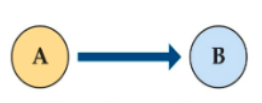
Indirect Interactions
the effects of one species on another through a third species
types
exploitative competition
apparent competition
trophic cascades
trophic facilitation
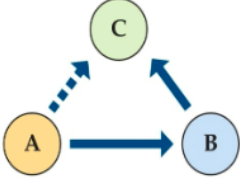
Exploitative Competition
Two species share a common resource and affect each other indirectly through the resource
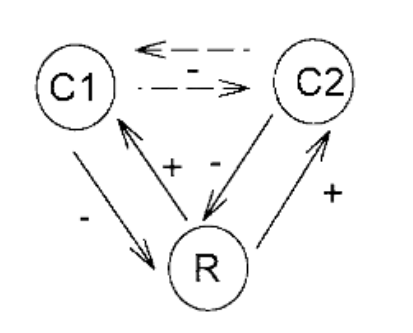
Apparent Competition
Two species share a common predator
The two prey species have negative effects on each other, even though they feed on different resources
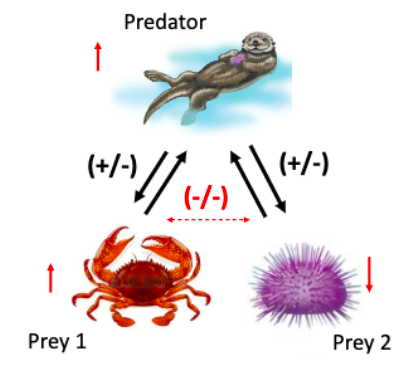
Trophic Cascades
Predators reduce mortality on the food of their prey by reducing prey density
In a food web, changes in populations of consumers at higher trophic levels may indirectly affect trophic levels below them.
negative interaction

Trophic Facilitation
when a consumer is indirectly helped by a positive interaction between its prey and another species
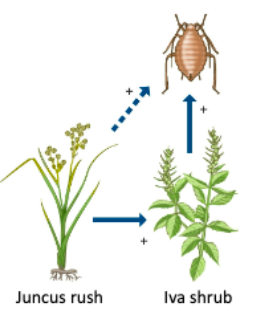
keystone species
A species other species in an ecosystem largely depend on. If it were removed, the ecosystem would change drastically.
ex.) wolves
ecosystem engineers
Any species that creates, significantly modifies, maintains, or destroys a habitat.
These organisms can have a large impact on species richness and landscape-level heterogeneity of an area.
ex.) beavers
foundational species
Foundation species are considered the “base” of a community, having the greatest influence on its overall structure.
They are usually the primary producers—organisms that bring most of the energy into the community.
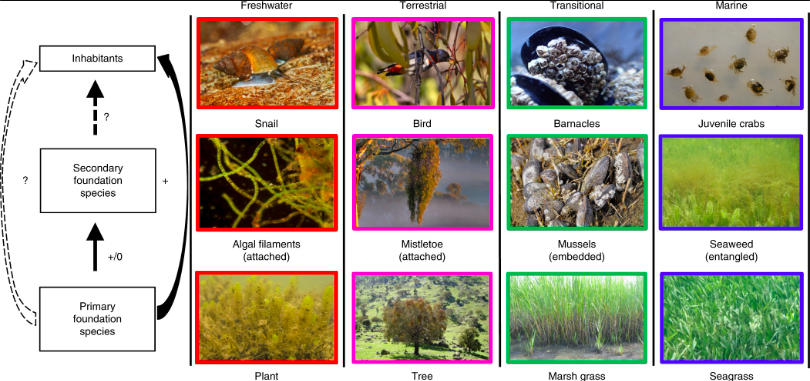
Primary Succession
when plants and animals first colonize a barren, lifeless habitat.
ex.) when lava cools and creates new rocks
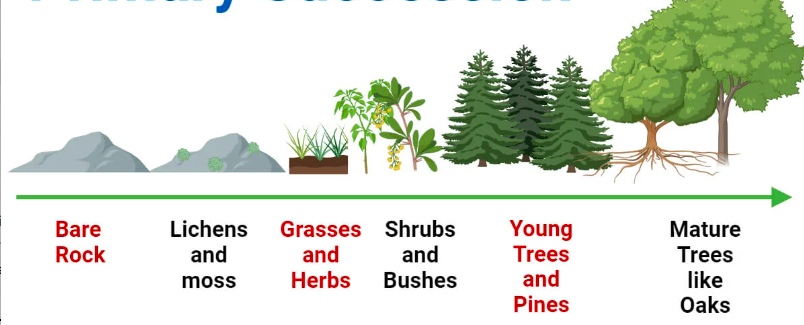
Secondary Succession
Species in an area have been removed, but seed and spores remain.
ex.) forest fire

Primary + Secondary Spectrum of Disturbance
primary succession must have a rare, high-intensity event to occur
secondary succession must have an infrequent, medium-intensity event to occur
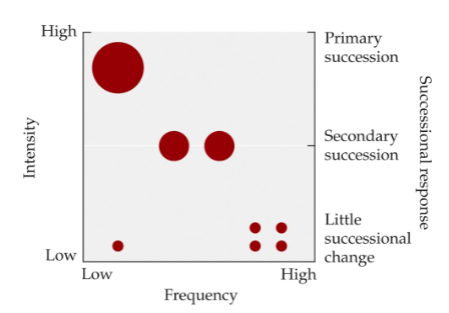
How can you study succession over long periods of time without spending that long studying in the field?
Cowles: Space for Time Substitution
a method for studying slow ecological processes at sites that are at different stages of development

Clement’s hypothesis about how succession proceeds
after a disturbance, any ecosystem would eventually return to its original assemblage of species
predictable model
A superorganism that "arises, grows, matures, and dies... is comparable in its chief features to the life history of an individual plant.”

Gleason’s hypothesis about how succession proceeds
the idea that vegetation in communities changes over time in response to disturbance.
succession is viewed as the response of species to environmental conditions to maturation and fluctuation
”individualist” model
individual species independently respond to environmental conditions

Elton’s hypothesis about how succession proceeds
He emphasized that the only way to predict the trajectory of succession was to understand the biological and environmental context in which it occurred
